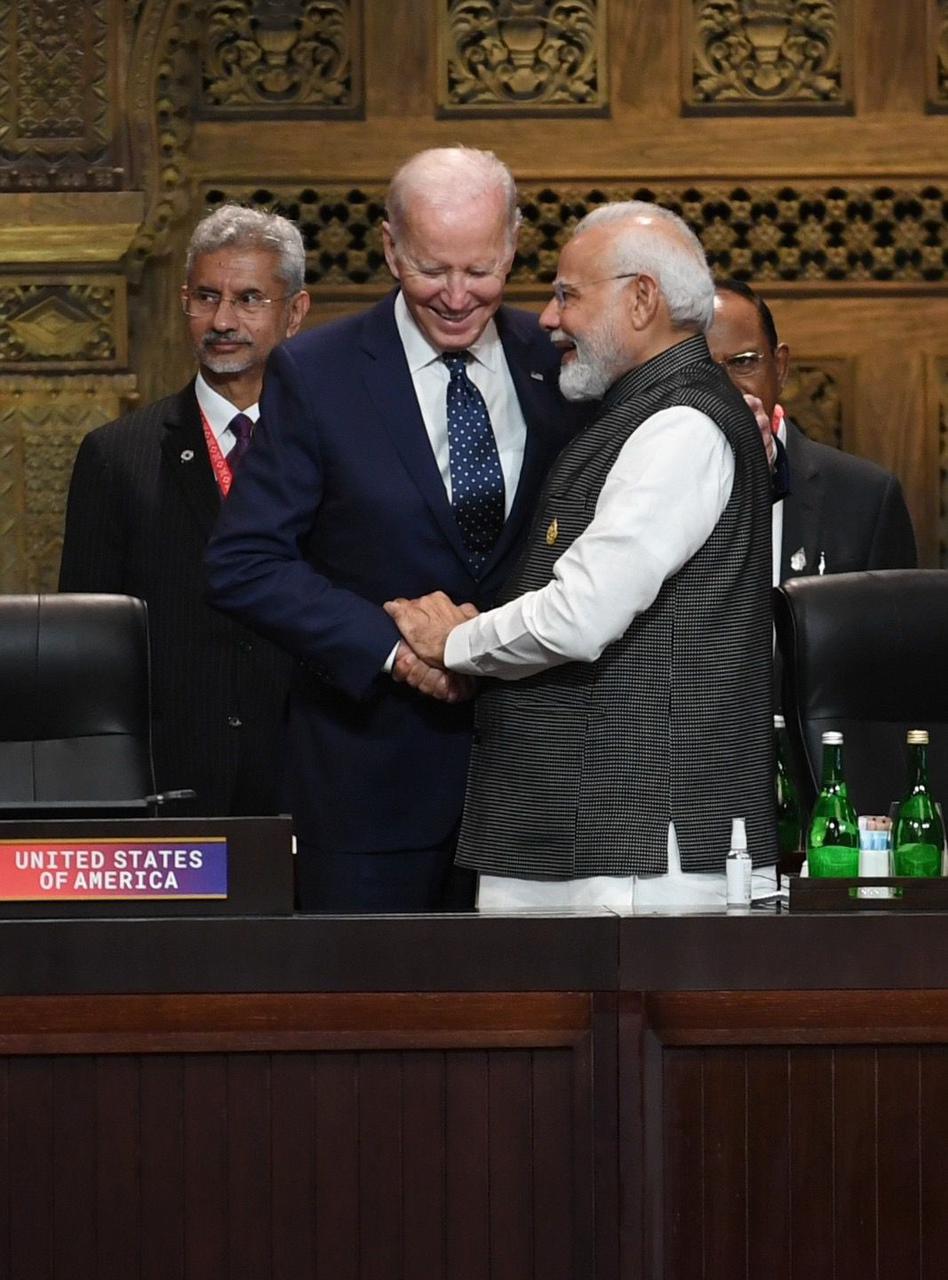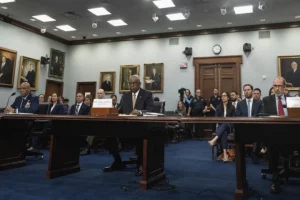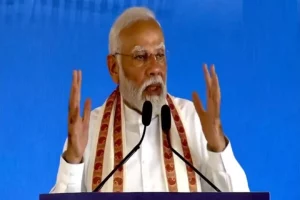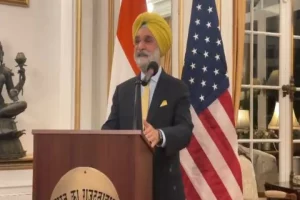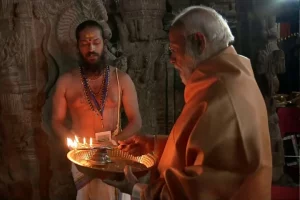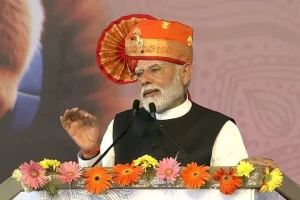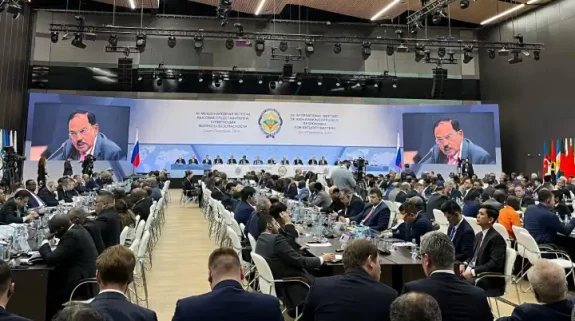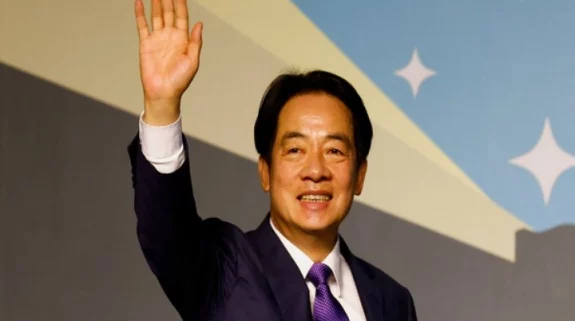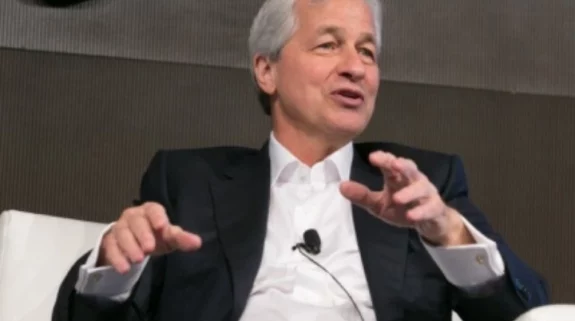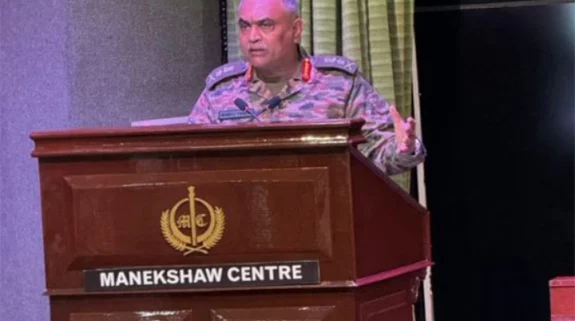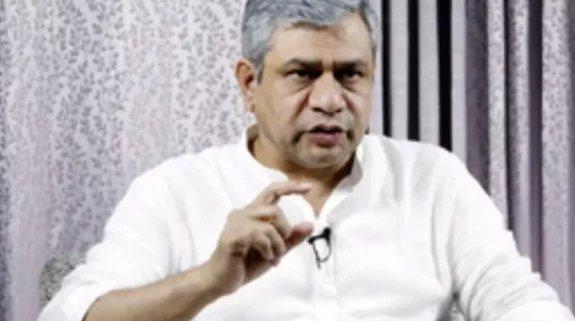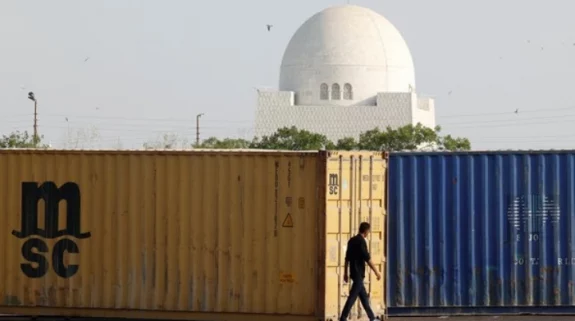The magazine ‘Foreign Affairs’ published by the Council on Foreign Relations (CFR) has for some time been publishing articles critical of India’s so-called democratic backsliding, its treatment of minorities, and so on, under the Modi government. It has been pushing the kind of narrative that Freedom House, the US Commission on International Religious Freedom, Open Society Foundation and such like organisations are promoting against India. Indians or Indian origin persons who have recently written negatively about India in the magazine include Shashi Tharoor, Hartosh Singh Bal, Arvind Subramanian, Happymon Jacob, Fahad Shah (from Srinagar) Sadanand Dhume, Sumit Ganguly, Milan Vaishnav, and so on. Andrew J Nathan from Columbia University has targeted India in a couple of articles. Our refusal to distance ourselves from Russia over the Ukraine conflict is the focus of some other pieces against India, including by Lisa Curtis.
The CFR has close links with the US foreign policy establishment because in the US system government officials frequently move to think tanks and rejoin government as political opportunities arise. Foreign Affairs is therefore influential in shaping views about India’s domestic and foreign policies in the transatlantic circles. Even if the policy of the US administration takes a broader view of ties with India as it has to weigh multiple interests at play and find some sort of a workable balance, the thinking in the American foreign affairs community and the Congress does get influenced by this negative narrative, to which the US “liberal” press contributes liberally.
The latest to join this current narrative about India is Ashley Tellis whose article is tendentiously titled “America’s Bad Bet on India”. In his recent publication :”Grasping Greatness: Making India a leading power” he argued that “even if India through its own exertions and supplemented by American support were to eventually become a true pole in international politics, most US policy makers do not believe their bet on India would have been fundamentally misplaced”. He also believed that the shared democratic values would make India a valuable partner for the US as Europe and Japan are today.
Such thinking is patronising in nature. India is not a roulette table on which one can make geopolitical bets. Such an American approach to ties with India or any other country would be inherently wrong. India has its own understanding of its national interest, its own priorities, its own thinking about the kind of relations it wants to build with the US. If the US has expectations of India as a partner, India too has its own expectations of the US as one. These mutual expectations will drive the ties, and not one-sided “bets” and the level of “returns” the US believes they should yield. It is not a lottery being played with either a bonanza or total loss at the end.
If, as Tellis says, “for the past two decades, Washington has made an enormous bet in the Indo-Pacific—that treating India as a key partner will help the United States in its geopolitical rivalry with China”, the question arises why this almost one-dimensional view of India as a partner? Should not there be more to India-US ties than dealing with the threats that arise for both countries from China’s expansionist policies in the Indo-Pacific area, and indeed globally. To say “From George W. Bush onward, successive U.S. presidents have bolstered India’s capabilities on the assumption that doing so automatically strengthens the forces that favour freedom in Asia” doesn’t explain why US-China ties flourished during this period and are still stronger, despite their mounting differences, than those of US-India ties. US policy makers even now are saying that they don’t want a confrontation with China, asserting that decoupling is not a goal and only de-risking of supply chains is.
It is not clear how bolstering India’s capabilities automatically strengthens the forces that favour “freedom in Asia”. When the US was sanctioning India and obstructing the development of India’s strategic capabilities did this weaken forces of freedom in Asia? India has been a democracy since 1947, but this has had no impact on choices made in Asia, including even in India’s neighbourhood, on forms of government and attachment to “freedom”. The US itself has forged close ties with Asian countries not based on their “freedom” credentials, but geopolitical considerations. India does not believe in spreading democracy either by example or by force, which is why linking strengthening India’s capabilities to favouring freedom in Asia does not make sense.
That, according to Tellis, “the administration has launched an ambitious new initiative to expand India’s access to cutting-edge technologies” implies that a favour is being done to India (the word “access” would imply that) without consideration. In actual fact, in the race for maintaining America’s leading position in new technologies, one that is being challenged by China (in some areas China is ahead of the US), the US needs partners. India, with its technology prowess in some areas, the role that its diaspora has played in boosting America’s technological strengths, and the capacity to scale up production with its advantage of manpower and talent, is an asset for the US in this global technology race. India, has independently of the US, barred Chinese technology companies from several sensitive areas of its economy and banned several Chinese Apps. This element of reciprocal advantages in cooperating with each other should not be ignored.
If the US has “further deepened defence cooperation”, it is with the goal of building a defence bridge with India that was hitherto absent and was a weakness in ties, displacing Russia as India’s biggest defence partner, and ensuring that Asia’s second largest country is drawn closer to the US in the geopolitics of Asia. Whether the Quad is “a pillar of its (America’s) regional strategy” is disputable, given the AUKUS alliance, focus on the alliance with Japan and South Korea, to the point now of drawing them into some form of association with NATO, a renewed alliance with Philippines etc. Quad has, of course, its place in America’s regional strategy which India shares.
To say the Biden administration has “overlooked India’s democratic erosion and its unhelpful foreign policy choices, such as its refusal to condemn Moscow’s ongoing aggression in Ukraine” is being presumptuous. This assumes that the political narrative being propagated by US and European NGOs, the press and think tanks about democratic erosion in India is valid, signifying a prejudice based judgemental approach to other countries continues to colour US foreign policy. Should India take the high chair and say that it is overlooking the “democratic erosion” in the US while seeking to develop ties with it? Where’s the need for such polemics? Should India reconcile itself to accept double standards, as usual?
What are India’s “unhelpful foreign policy choices”? Are India’s foreign policy choices meant to “help” India’s interests without damaging any legitimate US interest or they have to be helpful to the US even if they damage India’s interests? The US has, in fact, made “unhelpful” foreign policies by handing over Afghanistan to Pakistan, gifting US$ 450 million to Pakistan to upgrade its F16s, pushing Myanmar more into China’s arms by sanctioning its regime, putting pressure on Sheikh Hasina’s government in Bangladesh on democracy issues (not inviting it to the Summit for Democracy but inviting Pakistan), putting strain on our ties with Russia and pushing it increasingly into the arms of China, not to mention damaging our ties with Iran because of the sanctions regime.
As regards not condemning Russia’s ongoing aggression against Ukraine, what led up to this, the US, UK and EU choosing to support Ukraine with weaponry and finance, rejecting any dialogue at this stage, seeking Russia’s economic isolation, its strategic defeat and trying President Putin as a war criminal are reasons why the West’s narrative on Ukraine does not concord with our views or interests.
Tellis argues that the Biden administration has been “generous” to India “on the presumption that New Delhi will respond favourably when Washington calls in a favour during a regional crisis involving China”. This is conveniently vague. What does “respond favourably” mean ? Join the conflict militarily? Would the US join India militarily if an India-China conflict on the border erupted? Already with maritime, land and air exercises, agreement on logistics, more interoperability, Prime Minister Modi calling Quad a public good and stating India’s readiness to do burden sharing in the Indian Ocean, areas and levels of a “favourable” response are apparent.
If, as Tellis says, “India’s significant weaknesses compared with China, and its inescapable proximity to it, guarantee that New Delhi will never involve itself in any U.S. confrontation with Beijing that does not directly threaten its own security” and therefore “Washington’s current expectations of India are misplaced”, the reverse question could be asked. Will the US involve itself in an India-China confrontation if its security is not directly threatened?
The argument that “India values cooperation with Washington for the tangible benefits it brings but does not believe that it must, in turn, materially support the United States in any crisis—even one involving a common threat such as China”, begs the question whether cooperation with India brings America no tangible benefits. Is the Indo-US expanding relationship of cooperation built solely on India prospectively supporting the US against China in a conflict? What is the pertinence then of a whole gamut of India-US dialogues on trade, resilient supply chains, health, climate change, renewable energy, energy transition, data related issues, AI, Quantum computing, education, and so on?
“Washington has sought to strengthen India’s standing within the liberal international order and, when necessary, solicit its contributions toward coalition defence”, Tellis says. He adds that “India does not harbour any innate allegiance toward preserving the liberal international order and retains an enduring aversion toward participating in mutual defence”. What is this “liberal international order”? India as a functioning democracy, and the largest one at that, is a pillar of the international liberal order in the way it interprets it: no military alliances, no crusade for democracy, no double standards on human rights, acceptance of diversity, no imposition of “western values” on others, more democracy and equity in international relations, more say of developing countries in global governance, reform of the international political and financial institutions, no sanctions unless UN approved, and so on. What constitutes a “liberal international order” cannot be solely defined by the West.
India is standing up to China in Ladakh during three winters now at unconscionable heights, and earlier at Doklam. It is monitoring the movement of the Chinese navy in the Indian Ocean. It is exercising with the US and others in the Sea of Japan, and with ASEAN navies for the first time in the South China Sea. It is doing burden sharing with France in the western Indian Ocean with China’s penetration of East Africa also in mind. It is working with US and others on maritime domain awareness in the Indian Ocean. Is US pressing Pakistan to dilute its strategic ties with China? Has it weaned Sri Lanka away from its China leanings? Does the US feel obliged to secure India’s neighbourhood for us? A less one-sided view of India-US relations is needed.
Tellis asks the Biden administration should base its policies on a realistic assessment of Indian strategy and not on any delusions of New Delhi becoming a comrade-in-arms during some future crisis with Beijing. This is taking a very narrow and self-serving view of the relationship, making it a single issue one. Deterring China is a strategy that India shares with the US. India is already contributing to deterrence by showing to China its determination to counter its bullying and salami slicing tactics, positioning missiles and more air power close to the Tibet border, the Malabar exercises now joined by Japan and Australia, monitoring the movement of Chinese ships and submarines in the Indian Ocean, pushing back on the gains China has made in our neighbourhood etc.
Even a US ally like France is advocating strategic autonomy for Europe, lately triggered by US policy towards China, cautioning against Europe being dragged into a confrontation between US and China, getting caught up in “crises that are not ours”, and not becoming “America’s followers” in panic.
This is an apposite answer to the thrust of Tellis’s article on India in ‘Foreign Affairs’.
(Kanwal Sibal is India’s former Foreign Secretary and Ambassador to Russia. Views expressed are personal and exclusive to India Narrative)






